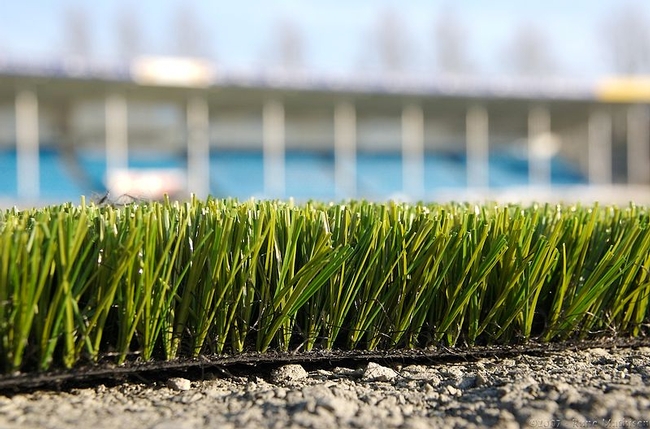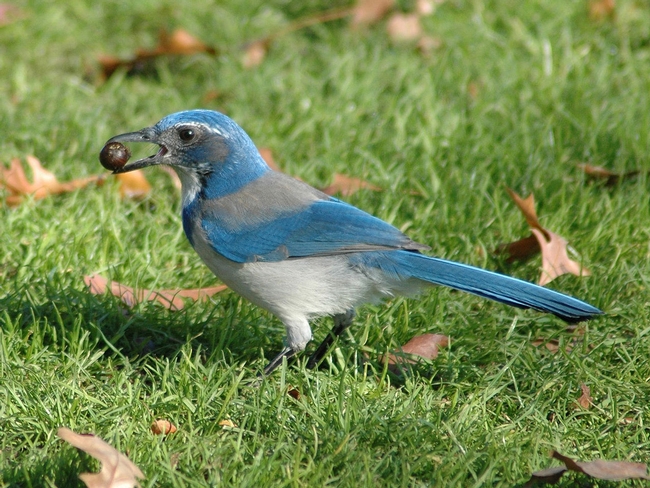Posts Tagged: Don Hodel
Living lawns keep yards cooler
Three UC Agriculture and Natural Resources researchers in Southern California have raised concerns about the trend in California to remove lawns to cope with the drought, reported Janet Zimmerman in the Riverside Press-Enterprise.
They believe living lawns need not be sacrificed to meet mandatory water-conservation goals set by Gov. Jerry Brown. Turf simply needs to be managed better, said Dennis Pittenger, UC ANR Cooperative Extension advisor based at UC Riverside. Pittenger co-wrote a white paper with UC ANR Cooperative Extension advisor Don Hodel in which they contend the push to remove grass is a knee-jerk reaction to the drought, the article said.
Pittenger provided five ways to reduce the amount of water needed for grass maintenance:
- Switching from fescue and other cool-season grasses to warm-season varieties such as Bermuda and St. Augustine, which go dormant in the winter. Warm-season grasses use 20 percent less water, when irrigated properly, than cool-season varieties.
- Ensuring sprinklers are working correctly, with overlap and good distribution.
- Using the appropriate amount of water. Lawns can survive on much less water than most people give them.
- Reducing or stopping fertilizer use, which prompts growth and increases water demands.
- Raising the mowing height to at least 3 inches to encourage grass to develop deeper roots.
“Do all those things before you consider taking out turf,” Pittenger said. “That will save quite a bit of water and maybe enough to get the savings necessary to meet goals.”
Jim Baird, UC ANR Cooperative Extension turfgrass specialist based at UC Riverside, said grass' contribution to increased property values and psychological well-being cannot be overstated, and it can be maintained with little water. Both Pittenger and Baird told the reporter they maintain living lawns at their own homes with minimal irrigation.
In an article on The Confluence blog, a team of UC ANR academics outlined "Practical advice on drought-tolerant landscaping in California."
They wrote that, "Trading in your turf for concrete, rock, or artificial turf are options. However, none of these selections promote healthy soils and other ecosystem services. In fact, all of these options can be problematic because they create a heat island effect and may have water infiltration or runoff issues."
Adapting to drought by removing urban landscapes has unintended impacts
Removing landscaping in urban areas to adapt to the California drought carries a gamut of potential repercussions on wildlife and the environment, reported LA Weekly. Two of Gov. Brown's water conservation rules - withholding water from grassy road medians and encouraging residents to remove their lawns - are taking an unexpected toll.
The subject was raised recently by two University of California Agriculture and Natural Resources (UC ANR) experts in a position paper they published on their website, the story said. Don Hodel, UC ANR Cooperative Extension advisor in LA County, and Dennis Pittenger, UC ANR Cooperative Extension area environmental horticulturist at UC Riverside, said landscapes and turf offer tremendous benefits to residents, communities and the environment.
"Nobody thought this out," Hodel said.
The LA Weekly article also quoted Loren Oki, the UC ANR Cooperative Extension specialist for landscape horticulture based at UC Davis. Among the obvious problems created by California's turf-removal program, Oki said, is "encouraging people to plant during the heat of the summer, which is the worst time" for new plants to survive in the ground. He predicts many of the low-water plants will not survive the late-summer heat.
Another UC Davis scientist, biochemistry professor William Horwath, raised the potential for turf removal to kill the "decomposition community" that lives in soil.
When cities and homeowners remove vegetation from land, that diminishes the diversity of the soil biology, especially the larger fauna such as worms, which feed off of the droppings of leaves and other materials from plants.
"If you are not growing anything, just gravel or mulch, you'll be losing a lot of worms, and you will at the same time be losing a lot of carbon from under the soil back into the atmosphere," Horwath said.
Oki was one of the authors of a recent post on the UC ANR California Institute for Water Resources blog, The Confluence, that provides practical, well-thought-out advice on drought-tolerant landscaping in California.
"A variety of options exist for gardeners implementing landscaping changes," the article says. "Trading in your turf for concrete, rock, or artificial turf are options. However, none of these selections promote healthy soils and other ecosystem services. In fact, all of these options can be problematic because they create a heat island effect and may have water infiltration or runoff issues."
The story details seven strategies for conserving water while maintaining a living landscape.


